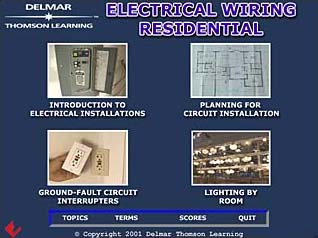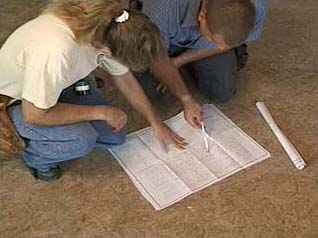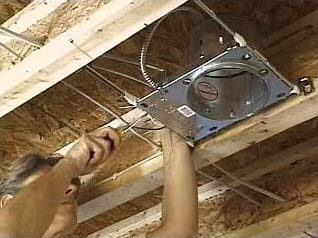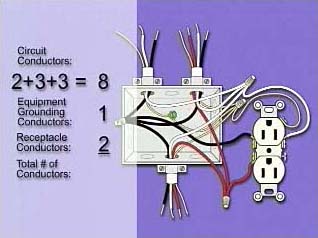Back to Course List
Electricity: Electrical Wiring Residential Part 1

- Product ID
- dlmrewr1
- Training Time ?
- 103 to 206 minutes
- Language(s)
- English
- Video Format
- Standard Definition
- Required Plugins
- MasteryNet Player
- Lesson Interactions
- 6
- Quiz Questions
- 40



Overview
This training, the first in a 2-part series, sets the stage for learning by motivating and heightening enthusiasm for learning about electrical installation planning essentials, Ground Fault Circuit Interrupters (GFCIs), special-purpose outlets, and custom installation. This training also provides a list of typical types of wiring for the residential industry.
![]() This course is in the Advantage™ format, to read about Advantage™ features click here.
This course is in the Advantage™ format, to read about Advantage™ features click here.

- Rich multimedia presentation with interactions and quiz
- Print certificate and wallet card
- You have 30 days to complete the course
Workplaces
Audience
Training for anyone learning to be involved in or currently involved in the installation and repair of electrical wiring for residential housing.
Topics
The course presents the following topical areas:
-
Introduction to Electrical Installations
- Introduction
- Plans
- Specifications
- Estimates and communication
- Electrical symbols
- Fixtures
- Box mounting
-
Planning for Circuit Installation
- Basics of wire sizing and loading
- Calculating floor area
- Determining Minimum number of lighting branch circuits
- Where to install receptacles and outlets
- Wire size
- Branch circuit rating
- Common connection problems
- Wire connections
- The weakest link in the chain
- Nonmetallic-sheathed cable
- Connecting wiring devices
- Conductor color coding for switch connections
- Connecting switches, receptacles, and lighting outlets
- Switch types
-
Ground Fault Circuit Interrupters
- Introduction
- Electrical hazards
- Code requirements for GFCIs
- What a GFCI does
- GFCI in residue circuits
- Feedthrough GFCI
- Testing GFCI receptacles
- Replacing existing receptacles
- Replacing 2-wire receptacles - grounding exists
- Replacing 2-wire receptacles- no grounding means
- Immersion Detection Circuit Interrupters
- Arc-Fault Circuit Interrupters
- Transient Voltage Surge Suppressor (TVSS)
-
Residential Wiring
- Types of lighting fixtures
- Fluorescent ballasts and lamps; incandescent lamps
- Outdoor lighting
- Residential lighting
- Grouping lighting and receptacle outlets
- Estimating loads for outlets
- Drawing the wiring diagram of a lighting circuit
- Determining the size of outlet, device, and boxes
- Lighting Branch-Circuit A19 for master bedrooms
- Ceiling-suspended fans
- Lighting Branch-Circuit A14 - hallway and bathrooms
- Lighting the front entry and porch
Intended Performance Outcomes
Upon successful completion of this course you will be better prepared to:
-
Understand the basics of electrical installation.
- Explain that power should be off when working on electrical circuits.
- Explain how the architect communicates construction work requirements to the trades.
- Choose the proper document provided by the architect which lists needed materials and equipment.
- Identify and explain electrical symbols used on drawings.
- Define an electrical outlet.
- Name a device.
- Explain the importance of electrical specifications.
- Choose the proper install and position requirements for wall boxes.
-
Utilize proper planning techniques for circuit installation.
- Calculate the general lighting load for a dwelling.
- Determine the proper number of branch circuits.
- List the NEC specifications for receptacle outlet placements.
- Restate how conductor size is expressed.
- Select the main concern when using aluminum conductors.
- Choose the basis of ampacity.
- Identify the color code reserved for and equipment-grounding conductor.
- Select the best method to attach conductors to a receptacle.
- Match proper conductors procedures to specific situations.
-
Use Ground Fault Circuit Interrupters (GFCIs).
- Explain the purpose of using GFCIs.
- Select the cause of a GFCI to trip.
- Identify the milliampere value when GFCI's sense and operate.
- List locations requiring GFCI-protected receptacles.
- Explain when a GFCI will trip.
- Recall procedures used to replace GFCI receptacles.
- State when GFCI-protected receptacles should not be used.
- Identify appliances that utilize the Immersion Detector Circuit Interrupter (IDCI).
- State the purpose of the Arc-Fault Circuit Interrupter (AFCI).
- Determine when to use Transient Voltage Surge Suppressors (TVSS).
-
Properly install room lighting.
- Identify the various types of lighting fixtures and installation requirements.
- Name an example of task lighting.
- Calculate an electrical load.
- Recall that there are no specific number of receptacles that can be connected to a branch circuit.
- State where to find information for cable layouts.
- Choose proper closet lighting requirements.
- Choose proper bathrooms wiring requirements.
© Mastery Technologies, Inc.

